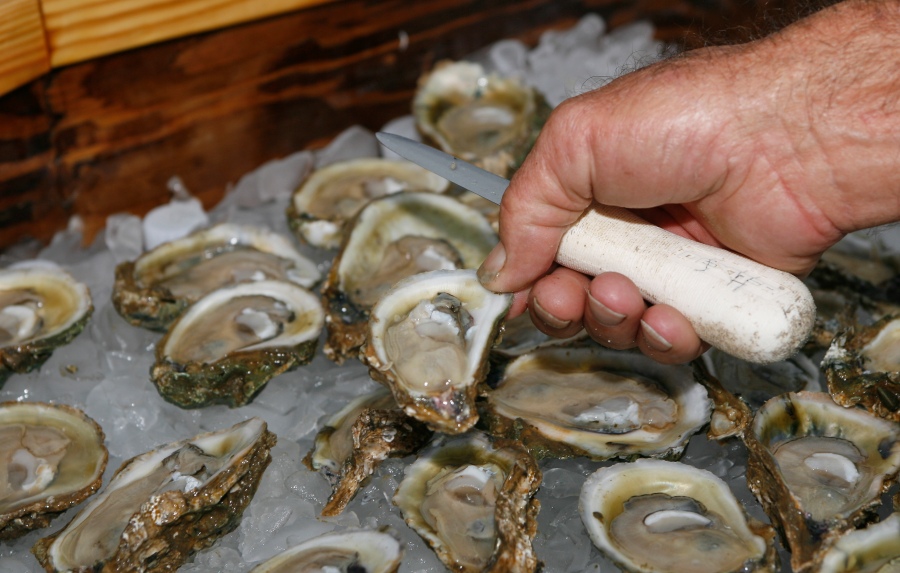TAMPA, Fla. (WFLA) — A new study by Florida International University’s Institute of Environment reported oysters found in three parts of the state contained toxic chemical contaminants. The scientists performing the study for FIU sampled oysters in Biscayne Bay, Marco Island, and Tampa Bay.
According to the study, of the 156 oysters sampled in the three Florida locations, all contained the chemical contaminants perfluoroalkyl and polyfluoroalkyl, as well as phthalate esters. Florida gas prices fall 11 cents in past 7 days FIU’s publication described the results as “Florida oysters found to have toxic ‘forever chemicals. ‘” “These contaminants pose serious health risks to people and wildlife, and the oysters prove they are in the water and have crept into the food chain,” the study said.
Its findings were published in Science of the Total Environment’s August edition. Focusing on the oysters collected for study at the Tampa Bay site, oysters were assed for “human health risk” to analyze the concentration of PFAS and PAEs. According to the study, each sample site’s oysters had different types of chemical levels.
FIU said in a previous study that PFAS were “chemicals that have been used in a variety of different industries over the decades and used in everyday human products” like paper products, food packaging, water repellents, adhesives, firefighting foams and more. The U. S.
Environmental Protection Agency says PFAS are “known to cause risks to human health” and can cause issues like decreased fertility, high blood pressure in pregnant women, low birth weights, accelerated puberty, some cancers such as prostate, kidney and testicular cancers, and can increase cholesterol levels, among other conditions. Florida teen gets leg amputated after shark attack The oysters in Biscayne Bay in southern Florida had the “highest concentrations of most of the PFAS and PAEs compounds” while the Tampa Bay oysters had “the highest levels of hydrogen peroxide” and the Marco Island samples had “the highest levels of lipid peroxidation. ” The study authors wrote that the Tampa Bay oysters “indicated low risk from PFAS and PAEs exposure.
” There was no “reference dose” for other chemicals, saying that “the risk of contaminant exposure is likely higher. ” Additionally, due to the smaller physical size of the Biscayne Bay oysters, the concentration of chemicals was highest in that testing site’s population. According to FIU, a concern for the oyster toxic contamination is its effect on humans who consume them.
“I wanted to look into what we’re eating and if it might be contaminating us,” Dr. Leila Lemos, the study’s lead author and an FIU distinguished postdoctoral scholar, said. “These findings are definitely a red flag, especially for areas like Biscayne Bay.
” A publication on the study by FIU said the oysters are “the best sentinels” to show an ecosystem’s health and contamination because of their existence as filter feeders. Filter feeders eat the plankton and nutrients suspended in the water of their environment, meaning they absorb the chemicals as well as the nutrients they need. Giant, invasive snails with meningitis-causing parasite found in Pasco County, FDACS says “Lemos says this was somewhat surprising since they were among the smallest oysters sampled.
The more time an oyster has to grow, the more time it also has to accumulate toxic chemicals,” FIU reported. “Tampa Bay oysters were among the largest in the study, but they didn’t have nearly the amount of PFAS or PAEs as the tinier Biscayne Bay oysters. ” The university said it may be a sign that Biscayne Bay is contaminated to the point of “bombarding” the oysters at that location.
“The contaminants are likely interfering with the oysters’ growth,” Lemos said, to explain the smaller sizes in Biscayne Bay. “In fact, there was a strong correlation between the amount of PFAS in the water and an oyster’s shell thickness and weight. The oysters with the highest concentrations of contaminants had the thinnest shells.
The number of contaminants in the area could impair their development — which raises concerns for how chemical contaminants could threaten oyster farming in other parts of the country. “.
From: wfla
URL: https://www.wfla.com/news/local-news/oysters-found-in-tampa-bay-contain-toxic-forever-chemicals-study-finds/



